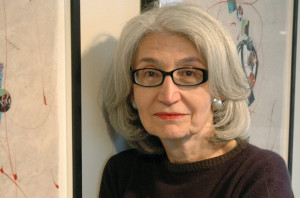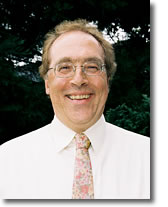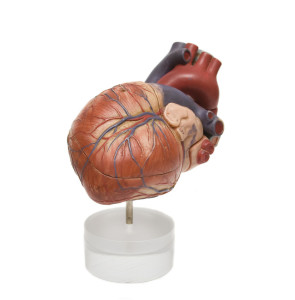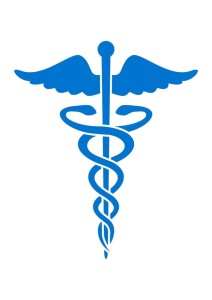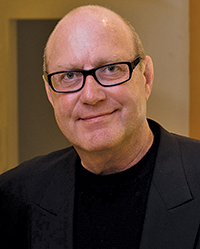From Laura Lee’s “Conversation for Exploration”
Reprinted from the November 2002 Townsend Letter with permission
Laura Lee: Hi, and welcome to “Conversation for Exploration.” I’m your host, Laura Lee. I’ve been hearing, and reading, about chelation therapy lately. It began when a neighbor of mine suffered a heart attack, and he was telling me how he opted not for the standard follow-up surgeries, but for chelation therapy. “Why not just remove the plaque in my arteries, slowly, gently and non-invasively,” he said, “rather than suffer through the traumatic, risky, open heart surgery the hospital pressures you to do?” And when I commented to an acquaintance how lucky he was to be, at 85 years old, so bright, energetic, and still at his career, he replied, “Oh, I owe that to chelation therapy for removing the toxic metals from my system. Renewing my memory, energy, and zest for life is an added benefit.”
Numerous studies show that chelation therapy removes not just plaque and heavy metals, but some of the key causes and signs of aging and a long list of degenerative disease, say Harold and ArlineBrecher. They are the husband and wife team behind the books Forty-Something Forever: A Consumer’s Guide to Chelation Therapy and other Heart Savers and Bypassing Bypass. Arline, a science and medical investigator and writer, joins us from Reston, Virginia.
Hi Arline, good to have you here. You document in your book how safe and effective chelation therapy is, as well as inexpensive. And how devastating toxic metals are to our system. Why isn’t chelation therapy part of the standard procedure for heart patients, and a preventative measure for the rest of us?
Arline Brecher: Oh, that’s a wonderful question, and one I’ve been asking for 27 years. And it’s the reason I wrote the book. When we first heard about chelation therapy in the 1970’s, Harold and I were medical writers and attending a conference. We had met two astonishingly bright holistic-style doctors who were on the cutting edge of new therapies and new discoveries and not afraid to step out and try things that they thought would be more beneficial to their patients than standard treatments. Well, we knew the best way to get a great story was to invite them out for dinner, and they said ‘sure.’ Later in our hotel room the phone rings, and they explained, “We’re going to have to break our dinner appointment, there’s a meeting that we’ve been invited to, and we’re going to go there instead.” Out of pure ego, I said, “a meeting that’s more important than talking with us? Well, if it’s that important, I guess I should go to the meeting,” and he said “You’re not invited. No reporters are allowed in.” So I said, “well, can I come as a human being?” They laughed and said, “if you promise not to write about what you hear, and not to tell anybody about what you’re going to learn, until we are ready to talk about it.” Well, can you imagine a more intriguing….
LL: No, I can’t!
AB: So there we were, in a hotel room, with about 40 doctors. There was a host at the door that they all seemed to know, and the way they all greeted him, it was like somebody returned from the dead. He was the one who had invited a select number of doctors to this off-the-cuff meeting that was not part of the regular conference. The story was that this was Dr. George Frankel, a very well-known cardiologist who had been absent from active life for more than six months. No one knew where he had been or what he had been doing. One afternoon he had been carried off the golf course by his golfing partners, suffering a heart attack. And there he was with his own hospital colleagues attending, and rattling off the percentage that his arteries were blocked and scheduling him for bypass surgery. His reaction was, ‘not me guys’ – the same prescription he had given to so many of his patients, he didn’t want to hear when it came to him.
As luck would have it, it was the week before New Year’s and the Christmas holidays. The doctors always say that this is a matter of life and death and we have to rush you into surgery and we won’t be responsible if you don’t have this bypass done at once. But it turns out that the Red Cross will not release blood for a bypass surgery, which by the way, they do not consider an emergency operation, the week before the Christmas holidays because they are holding back the blood for all the auto accidents that they are expecting. So he had a ten-day reprieve. And he scooted out of the hospital and got on the phone and did what we call a “DID” – “Doctor in Distress” and called everyone he knew and asked, “what is there that I can do besides bypass surgery for my blocked arteries?”
Finally he got a call from a colleague he hadn’t heard from in years, who said, “have you ever heard of chelation therapy?” And what gives me chills is that people are still asking this question 30 years later. Dr. Frankel said, “no, what is it and how do I spell it?” And this doctor said, “if you go to your university library and look it up, you will find more than 4,000 published studies on chelation therapy in the medical journals, mostly from the foreign literature. There is one place in the US, Dr. Ray Evers in Mobile, who conducts a chelation clinic, and if I were you, I’d make arrangements and go there at once.”
And so Dr. Frankel did as he was advised. Dr. Evers was a magnificent human being, and let anybody come, no matter how sick they were. He was doing a very dangerous thing; dangerous for him, not for the patients, because chelation therapy was in such disrepute. But no matter how sick somebody was, and most of Ray Evers’ patients, and I’ve met and talked with lots of them, were carried in, they were too sick to walk. In those days, in the 1970’s, you didn’t see healthy people in chelation doctor’s offices. You didn’t see healthy people being chelated preventively, or just with early signs of angina. You saw the basket cases, the almost dead, almost everything else had failed, and they had been told to go home and put their affairs in order. Dr. Frankel was accepted as a patient and instead of just being treated – because it didn’t take him long, as a doctor, to realize how much better he was feeling, and how his progress was going – he paid attention to the other patients there. He watched them improve, and so he stayed for six months, learning how to be a chelating physician with Dr. Evers as his mentor.
And so he said to the doctors in the room that night, “Now let me tell you why I called this meeting. When the word of this goes out, there will be such a demand, when the public finds out that there is a safe, effective, and non-invasive way to overcome the dread disease of atherosclerosis, and we are not ready for that. We have no doctors trained, no association ready to certify people, and train them, we have no research, no publications, nothing. We’re starting from scratch here. So each of you who is invited here today to form a medical association to do what needs to be done, so chelation therapy can be widely offered, safely and effectively by trained, skilled doctors.”
We were there the night that the organization now known as ACAM, the American College for the Advancement of Medicine, was born. It does everything that Dr. Frankel suggested needed to be done: they hold conferences twice a year, they train doctors in chelation, and they supervise the certification of those doctors. And now, 30 years later, at last, the government-funded study to prove out the validity of chelation therapy was just announced. Your timing is wonderful, Laura Lee.
LL: That the conclusions are in, or they are just beginning the study?
AB: They are just beginning the study. It is 30 million dollars, sponsored by the National Heart, Lung, and Blood Institute. It will be a multi-center, randomized clinical trial, to determine both the safety and efficacy of chelation therapy for treating coronary artery disease. The proponents have been begging for this for years. The opponents have done everything they could to block this kind of research. And so now to go back to your first question: why don’t more people know about chelation. Well, money, greed, power….
LL: And politics.
AB: And politics. You know, medicine is so full of politics. People have caught on, that health care is disease care in this country, and it’s in crisis.
LL: That’s why we seek alternatives, when the standards don’t work. OK, so there’s a logical sequence here. We know how devastating the heavy metals are. It’s acknowledged that chelation is the treatment of choice for cases of acute toxic heavy metal poisoning. And we know how widespread heavy metals are out there. So explain the connection between heavy metals and heart disease. You write that it was once thought that chelation took the calcium out of the plaque. But there’s a new understanding that the chelation takes away the heavy metals and also free radicals are implicated in the hardening of the arteries, not to mention the devastating effect it has on so many of the body’s systems.
AB: Atherosclerosis, which is the main culprit when they talk about cardiovascular disease, is hardening of the arteries. The more appropriate way to understand that is to call it calcification of the arteries. We have a population that has been fed the idea that we need more calcium. But that is one of the most devastating nutritional myths out there. Calcium, while it is a vital mineral, is the most damaging mineral you can over-ingest. Because it takes X amount of magnesium to balance out X amount of calcium. And if the biochemistry of the body has gone askew for any reason, then the input/output of the cells and balancing of the calcium and magnesium goes awry, with the result that there’s calcification buildup in the arteries.
LL: So it goes back to what my mother said, and her mother before her: everything in balance.
AB: Oh yeah, but getting that balance is a whole lot harder these days than when our mothers and our grandmothers were doing it. That same wonderful Dr. Evers, to whom we dedicated Forty-Something Forever wrote a piece many years ago called “Magnesium and the Link to the Mystery of Aging and Calcification.” I hold this paper and I’m in awe over its impact and scientific validity because Dr. Evers was not a scientist, he was a clinician, a doctor, he took care of people, he was a pioneer. He wrote a paper on this subject that holds up to today’s knowledge, and has a wisdom that many of today’s doctors have forgotten. So when we’re talking about EDTA chelation therapy, we are talking about removing from the cells, those toxic elements that prevent the cells from functioning properly. It’s not just the toxicity of the elements that it’s removing, the lead, arsenic, mercury, and so forth. It’s not just that. It’s that with those deposits in the cells, the cellular biochemistry that keeps us in balance including and maybe primarily, the calcium-magnesium balance, is upset, and that allows the calcification that causes the disease. Now it gets more complicated, naturally; this was a real simplification. People need to understand that calcification starts as a biochemical deficiency of magnesium, among other things.
LL: And it’s a system-wide deficiency. So when you go in with open heart surgery they are just fixing one piece, you’re not addressing the whole puzzle.
AB: It’s worse than that. You’re being kind. Can I be unkind?
LL: Yes, please. Tell it like it is. That’s what you’re good at.
AB: I used to say, when I was younger and kinder, and hadn’t yet talked to so many thousands of people, that your whole arterial system suffers from exactly the same amount of calcification and blockage as that very small portion that they show you on an X-Ray. They do the bypass or that angioplasty on that little piece of pipe! Because that’s all they can reach. But what about down to your toes, and the tip of your fingers, and up to your brain. People understood that. And it’s true. But what is left out of that explanation is this: it’s not just that the bypass and the stents and the contraptions that they use in this ‘cut ‘em apart and sew’ em up.’ Now here comes the anger. It’s because that damages the arteries for all time. Because you’re never well again. Because no matter what they tell you, it’s a lie. Because it’s not true that there are benefits to the surgery.
LL: So once again the medical profession ignores the safe, the effective, the non-expensive, the non-invasive, and the whole-body benefits that come from chelation. And they keep selling, and they keep pressuring people – I heard it from my neighbor – that you must get the risky and traumatic procedures, that do damage. It seems criminal.
AB: Laura Lee, I’ve heard more horror stories. Let me tell you the one that stands out in my mind. A man called up one day, and told me his situation. He had just had bypass surgery and was now looking for a chelation doctor. He knew all about chelation. Why did you have bypass? I asked. He told me that he had a minor heart attack while on vacation, and he got the whole sales pitch, but he told them that he wanted to go home and have chelation therapy. “Oh no,” they said, “you can’t do that.” So they got hold of his wife, and they scared the heck out of her. They told her that because of the heart attack, he had lost his mental capacity, and he was not in a condition where he could make a self-determination about his therapy. That he wouldn’t live to leave the hospital, and it was her obligation to save his life by signing the consent decree for the operation.
LL: So she could force him to do it.
AB: That’s right, and she did. And he said to me, ‘you know, I love my wife, and I was afraid that she wouldn’t survive if I didn’t have it. But I couldn’t put her through that, so I thought I’ll have chelation after the operation.’
LL: What does the operation do, that it damages your system to the extent that it will never get back to normal?
AB: First of all, when they do the bypass, they are replacing artery with veins. Excuse me God, did you mean us to have replaceable arteries? I don’t think so. Veins don’t work like arteries. That’s number one. Number two: if you follow the literature and the research, which I do, this is the way it goes. You never find out what’s wrong with what they are doing when they pronounce it “new and wonderful,” until they come along with an improvement. That has to do with stents and angioplasty and every so-called technological development that’s come down the orthodox trail in the 25 years I’ve been following chelation therapy. When angioplasty came along for the first time, the first study that came out after a sufficient amount of time passed, what do you know – angioplasty was found to be a precursor to cardiovascular surgery. So now we get to do two or three operations where before we only did one. Now about the stents – it wasn’t until they invented stents that they were willing to admit that the place where they did the sewing together was the first place for new plaque to build up and start the problem all over again. But now when they introduced stents, they said that they prevent the problem of it coming back together. Well, then we found that the stents themselves cause further damage. And now guess what – we have new stents, and now they admit the old stents cause problems. And the new stents are coated with radioactive material.
LL: So it just gets worse and worse. Well, rather than push the plaque in the arteries around, why not remove it altogether? And not just from around the heart, but throughout the body. And not just the plaque, but the heavy metals, so the cells can function normally. How can they ignore these proven effects of chelation therapy? We’ll find out more from ArlineBrecher. Her book is Forty-Something Forever. Even if you don’t have heart disease, the number one killer out there, this is a book worth reading so you can take the steps now to prevent it, and improve your overall health, measurably.
LL: Let’s continue our conversation with ArlineBrecher. Arline, a couple of things. You are explaining how the medical institution not only ignores chelation therapy, they are lobbying against it. Could you please give us a quick history of chelation, tell us what the EDTA, the ethylene diamine tetra acetic acid does; is it so hard to understand what this stuff does?
AB: One of the problems with EDTA chelation therapy, is the intensive research to explain the exact biochemistry has never been done because there has never been anybody to fund it. So most of what we know is from the best research ever – watching the clinical results of thousands and thousands of patients. Where it came from, is a development of EDTA. It’s a totally non-toxic drug. You wouldn’t believe there was such a thing. The FDA approved formal clinical trials, several of them; there just never was enough money to get them completed. Right now, EDTA is the drug of choice for heavy metal toxicity, which is where it is totally accepted. That’s what it’s for. Next is to get it approved for the decalcification of cardiovascular disease and these other uses. The FDA accepted all these research protocols without demanding a safety study because the safety of EDTA has never been questioned. So one of the things that is really distressing about the doctors who want to trash chelation therapy because it interferes with their own very lucrative practices, is that they spread a lot of mythology about it being dangerous, causing liver damage, or kidney damage. When actually, all the research that has been done has been done on patients and keeping very good clinical records on their progress, which proves its safe use.
LL: EDTA is unusual in that it has been used in hundreds of applications, you find it as a preservative in foods, in dyes. You say that the word comes from the Greek “chele,” which means claw, because it gets in there and grabs on to the metals and pulls them out, so they can exit the system.
AB: Exactly. It was first used in the fabric dye industry in Germany when the Germans felt that they were going to be cut off from industrial supplies of citric acid, and developed this product instead.
LL: And it does even better than citric acid for that use.
AB: The first use of it in a clinical application was in one of these happenstances, in the days when you didn’t have to go through lengthy procedures to try something out. When doctors were free to say, “Hey, I see a patient with a problem, I’d like to try something.” Let me interject something. We have such a roster of pioneers in this business. Harold and I have a dream of leaving a legacy, an Alternative Medicine Hall of Fame. We want the people who come behind us to recognize us, to recognize, understand, and appreciate the pioneers of holistic medicine. How they became what they became, how they contributed to what will someday be standardized treatment, because what goes on these days ain’t going to last. And so much of what was ‘poo-pooed,’ twenty and thirty years ago, like Vitamin C and Vitamin E, today is standard. And so the website will be up soon, “Alternative Medicine Hall of Fame” honoring the pioneers, there are so many. I just wanted to mention that.
LL: Great idea. About chelation, you say that it removes, in this order, the heavy metals – chromium, iron, mercury, copper, lead, zinc, cadmium, cobalt, aluminum. Zinc and iron are necessary. Men can get too much iron, but women lose iron, and get anemic. And zinc is hard to hang on to, that’s another common deficiency.
AB: After menopause is when women’s rate of heart disease matches men’s. There is research documenting that.
LL: And then there’s the free radical connection.
AB: Exactly, because that sparks the free radicals. It’s another way of saying ‘biochemical instability” that is causing nutritional deficiency that’s upsetting the way everything in the body works. That’s the other aspect that should be so obvious to any physician, but it’s the age of specialization, and the orthodoxy pretends that when you have something wrong with your left toe, it has nothing to do with your right eye. That’s not true. You can’t have a healthy heart if you have a sick body anyplace. It can’t be. Whatever goes wrong in one part of the body eventually will spread and affect every part of the body. And the whole idea of keeping yourself in balance, and nutritionally fortified, and to get rid of the toxins that we ingest everyday, is the only way to remain healthy.
LL: You give a nice list in your book, of the various names we give the various sites in the body that degenerate. Let me read this paragraph: “First cells, then tissues, then genetically weakened organs give way. The result is some form of degenerative disease, involving the heart – call it heart disease, the joints – we call that arthritis, the brain – we call that Alzheimer’s, pancreas – we call that diabetes, the immune system – we call that AIDS. Or whatever organ is the first to falter.”
AB: I’m glad I wrote that.
LL: It’s all the same cause, of the cells going wrong, and depending on where they are, is what name you’re going to give it.
AB: And the pharmaceutical industry is built on having a separate item to counteract every one of the diagnostic names. To the point where the pharmaceutical industry, of late, has even made up diseases. Social anxiety became a disease when they came up with Prozac. It’s reached the point where I don’t know how they can be believed.
Charles Farr, one of the great pioneers of chelation therapy, said, “Have you ever noticed that the same diet that is good for arthritis, is good for diabetes, is good for heart disease, is good for allergies, is good for depression.” What a remarkable statement that is. Nothing I ever heard pointed so clearly that something is either healthy for the body or unhealthy for the body. “I don’t care what’s wrong with you, what you call it, or how it’s been diagnosed, or what state you’re in today. There is only one way to reverse a disease. Build health into the cells, and crowd out the disease.” You can’t beat the disease, drug the disease, cut it out of the body, radiate or chemo it out of the body. You can’t do anything else to combat the disease except build health. And that’s what we’re dedicated to.
Basically, it’s a philosophical difference. Why the big fight against chelation…why we haven’t heard about it…why the orthodoxy fights it tooth and nail. It’s because chelation therapy represents an entirely different paradigm of healing, medicine, and health. If we are right, they are all wrong. That’s a fearful idea for them to contemplate, because what we talk about is building health into the body, which is the only way to banish disease.
LL: But it seems both are necessary, Arline. If you get run over by a car, and your life is slipping away, you want them to come in with the surgery and the heavy-duty drugs to keep you alive. And then you can worry about your general health and well-being after that. Maybe that same philosophy – ‘we can get in there with high tech procedures’ – they get enamored of that and see that as the only solution, across the board. So they don’t see that chelation therapy and other alternative therapies can help before you get to the crisis stage of degenerative disease. But we do need both approaches in medicine.
AB: I’ve had no biochemistry, I’ve never studied science, I was never interested in becoming a doctor. But you are your own best doctor. Be really sensitive and aware of when you felt well, and when you don’t, and what you’ve done to change that, and how you made your self healthier every day. Get your blood work and find out what you need, and pay attention to rest, and food, and chelation if you need that. Because if you do, even those traumatic events for which surgery and trauma care might be necessary….
LL: You’re going to weather them better.
AB: Exactly. And chelation therapy has great word of mouth. People see their friends who’ve just been chelated, and ask them why they look so good. Do you know, we’ve sold over one half million copies of Forty-Something. And I take no credit for that. Easily one-third of those sales have been people who send ten copies at a time to all their friends. They find it easier to tell their friends what they’ve been doing.
I want to read you a letter. This is from Samuel Benjamin, and he writes: “After being told by my cardiologist that after two blocked arteries I was a candidate for bypass surgery, I began making inquiries to friends, and out popped two words: chelation therapy. With my life at stake, I began researching the subject by reading books and articles, both pro and con. And next I located an office practicing chelation, asked for a list of patients, and proceeded to interview about 40 patients, which were very affirmative.” Aren’t people smart?
“Then I researched bypass surgery and discovered that the Office of Technology Assessment, an arm of the US government, stated that bypass surgery has never been carefully evaluated before being rushed into use by the AMA.” Well, this is true. “Ten billion dollars are spent yearly on 300,000 procedures with a casualty rate of 20,000 patients annually. At a symposium by the AMA, a Dr. Henry MacIntosh stated that bypass should only be used in cases of crippling angina which does not respond to conservative treatment.”
LL: So not just the standard treatment for everybody.
AB: Right. And he continues: “So my only alternative was chelation. So I requested my insurance company underwrite the cost of about $3,000 for 30 treatments, and they immediately refused. But would underwrite an unproven and dangerous procedure, a bypass, at a cost of approximately $70,000. I felt I just entered LaLa Land.”
LL: Do the math, right?
AB: “Prior to chelation: 1) No energy. I napped at least two hours a day. 2) could only walk 50 feet before a cramp in my left leg stopped me. 3) due to diabetes, macular degeneration had dimmed the sight in my left eye, requiring reading of large print publications. After 18 chelations, 1) energy returned, eliminating naps of two hours daily; 2) blockage in left calf disappeared; now walk distances; 3) bonus: one morning, I picked up a newspaper and read it. Without question, the above improvements are due solely to the chelation treatments since for over five years, medication has not helped. I indict the AMA, the medical Mafia, for doing a hatchet job on alternative medicine, particularly chelation, to the detriment of the public, who so desperately need this procedure. I also chastise the public for allowing the medical profession to remain on a pedestal, hiding behind their ignorance. Benjamin Rush, one of the signers of the Declaration of Independence, and personal physician to George Washington, over two hundred years ago, declared the following. ‘Unless we put the medical freedom into the Constitution, the time will come when medicine will organize into an undercover dictatorship to restrict the art of healing to one class of men and deny equal privilege to others to constitute the best medical science. All such laws are un-American, and despotic, and have no place in the republic.’ Here’s a new Hippocratic Oath: I believe in the AMA, I believe in the drug industry. I believe in bypass surgery, I believe in the tooth fairy. I believe in Santa Claus. I believe in the mighty buck. Signed, Samuel Benjamin”
LL: I want to add here the quote that you have in the beginning of your book, from your hero, Ray Evers. He said, “One does not have true freedom until one is free to choose how he wishes to be treated medically.” Our hour is about to end, so I have to ask you about the across-the-board improvements: the reversals of the signs of aging, the improved memory, improved vision, improved energy, and all the rest of the list that you have seen from patients, heard from patients, and that have been documented. It’s very logical to understand those improvements if the cellular health and balance returns to each of the cells of the body. Then of course the body would revive itself across the board. It’s just logical.
AB: You’ve got it! You see, one of the big damning charges, because we are so opposite the drug industry, is that it’s snake oil, it claims to do everything. And that reveals their ignorance. If chelation therapy works, biochemically, the way we say it does, the proof of it is, it does everything, because that is the way the body works.
LL: So you take out the poisons from inside each of the cells, the cells go back to balance and doing their job, and health returns.
AB: And there goes your wrinkles, and you get your memory back, and your eyesight clears, and you walk with a spring. And you breathe easier, and the lungs are better, the heart is better, everything is better.
LL: Arline, thank you for being an advocate for health, and how we can regain our health, protect our health, and the various methods we need to know about to take those steps. Thanks for the 27 years of work you’ve done on this mission.
AB: Thank you for this wonderful conversation, I’ve enjoyed it so much.

